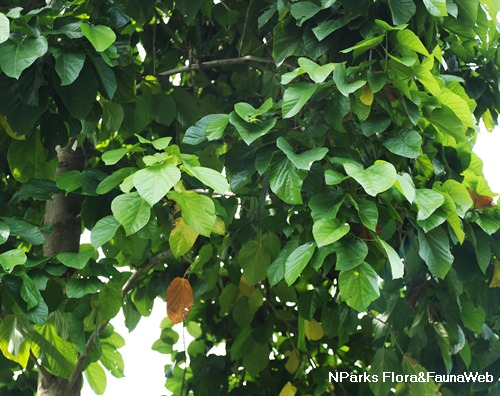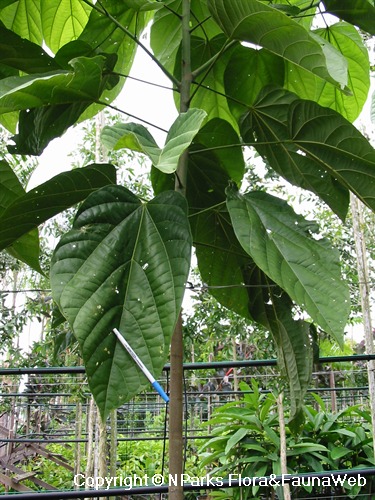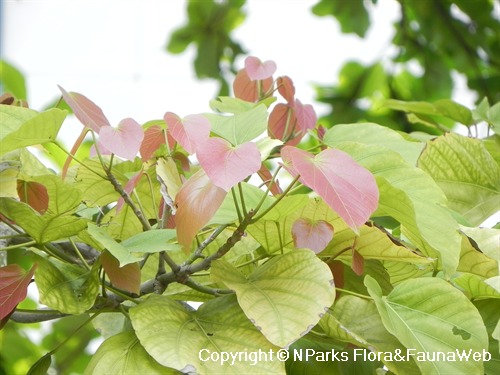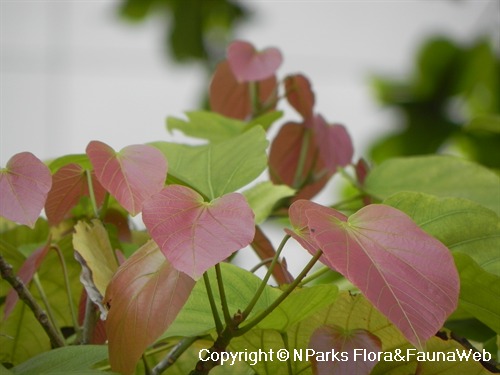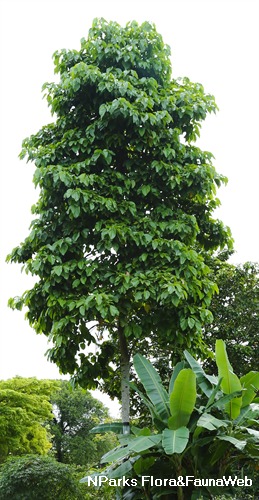
Back
Pterygota alata
| Family Name: | Malvaceae |
| Synonyms: | Sterculia alata |
| Common Name: | Kasah, Buddha's Coconut |
Name
Classifications and Characteristics
| Plant Growth Form | Tree (Big (>30m)) |
|---|---|
| Maximum Height | 45 m |
| Maximum Plant Spread / Crown Width | 8 m |
Biogeography
| Native Distribution | India, Myanmar and Northern Malaysia |
|---|
Description and Ethnobotany
| Trunk | Bark light grey, large buttresses present. |
|---|---|
| Foliage | Leaves are large, about 12-30cm long, ovate-cordate in shape, with wavy margins. Texture is smooth, and petioles are about 7-15cm long. Leaves are somewhat clustered towards the ends of the branches. |
| Flowers | Borne in small racemes, flowers are pale orange to red, about 1.5cm across on 2-3 mm long stalks. Flowers have no petals, but 5 sepals. |
| Others - Plant Morphology | A large, upright tree, having a tall, columnar-to-oblong, shady crown. Large buttresses are found on matured trees.Fruit:Fruit is a follicle. Pod is round, and splits along one side, releasing many seeds each with a long "wing" which are then scattered by wind.CultivationEnjoys a sunny location and thrives in rich, good draining soil. |
Landscaping Features
| Landscape Uses | General |
|---|
Fauna, Pollination and Dispersal
| Seed or Spore Dispersal | Abiotic |
|---|
Plant Care and Propagation
| Light Preference | Full Sun |
|---|---|
| Water Preference | Moderate Water |
| Plant Growth Rate | Moderate |
Foliar
| Mature Foliage Colour(s) | Green |
|---|---|
| Leaf Area Index (LAI) for Green Plot Ratio | 3.0 (Tree - Intermediate Canopy) |
Fruit, Seed and Spore
| Fruit Classification | Aggregate Fruit (Syncarp) |
|---|---|
| Fruit Type | Dehiscent Dry Fruit , Follicle |
Image Repository
Others
| Master ID | 1804 |
|---|---|
| Species ID | 3097 |
| Flora Disclaimer | The information in this website has been compiled from reliable sources, such as reference works on medicinal plants. It is not a substitute for medical advice or treatment and NParks does not purport to provide any medical advice. Readers should always consult his/her physician before using or consuming a plant for medicinal purposes. |

